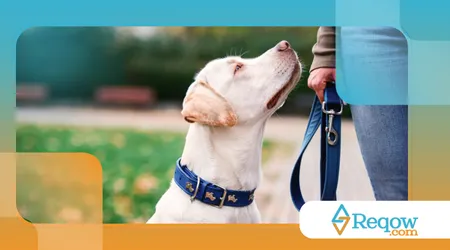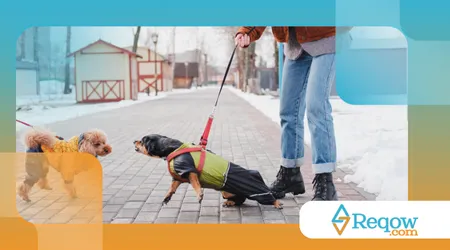How to teach your dog to respect other animals on the street

Teaching your dog to respect other animals on the streetEnsuring safe and peaceful walks for your four-legged friend and the community is a desire of every responsible pet owner.
Advertisements
The way your dog interacts with other animals during urban walks defines the quality of that experience.
Therefore, developing mutual respect is not just a matter of good manners, it is a pillar of canine safety and well-being.
Addressing reactive and excitable behavior requires patience and consistent techniques.
Why are Socialization and Control Fundamental?
A lack of control in external interactions is a source of stress for both dogs and owners. A dog that barks or pulls uncontrollably upon seeing another animal signals a lack of control.
Advertisements
Therefore, prioritizing learning basic commands under distraction is the crucial first step.
This training needs to be done in controlled environments before going out on the street.
What Behavioral Techniques Help with Canine Respect?
Positive training focused on reinforcing desired behaviors is the most effective approach.
Therefore, reinforcing calm and attentiveness rather than punishing reactivity creates a bond of trust.
It is essential that the dog associates the presence of other animals with something neutral or positive.
How Does Desensitization and Counterconditioning Work?
These techniques aim to change the dog's emotional response to the stimulus (another animal).
Desensitization exposes the dog to the stimulus at a safe distance, below the reaction threshold.
Counterconditioning, in turn, associates this stimulus with a high-value reward.
Thus, the owner notices that the dog begins to become tense when 20 meters away from a cat. At this distance, the dog still doesn't react aggressively.
Read more: Tips for introducing your dog to a newborn baby
The owner immediately offers a special treat (which the dog only gets in this situation) and praises the dog for being calm. With time and repetition, the distance gradually decreases.
The presence of the cat now means the arrival of something good.
How Does the Owner's Body Language Influence the Dog?
Dogs are masters at reading the nonverbal language of humans.
An owner's anxiety or tension, anticipating an encounter, can quickly be absorbed by the animal. Maintaining calm and a relaxed body posture projects security to your dog.
The leash should be held firmly, but without excessive tension.

How Important is Proper Leash Handling to Teach Your Dog to Respect Other Animals on the Street?
The fixed length leash (approximately 1.5 m) is recommended for control in urban environments.
Using retractable leashes can give a false sense of control and allow the dog to wander too far. Preventing the leash from becoming taut, known as "slack leash," is essential.
Look how interesting: Ways to entertain your dog on rainy days
When the dog tightens the leash, the owner must stop and only continue when the leash is relaxed.
This technique teach the dog to respect other animals on the street is a clear communication tool.
Why Consistency is the Key to Success?
Otherwise, the canine brain learns through association and repetition. Inconsistencies in rules and commands can confuse the animal, undermining the effectiveness of training.
Every family member must apply the same rules and commands during walks.
A study published in 2023 by Journal of Veterinary Behavior demonstrated that consistent application of positive reinforcement reduces reactivity in urban dogs by up to 65% after 12 weeks of training.
This data reinforces the validity of conditioning techniques.
How Does a Dog Learn to Make Better Decisions?
The ultimate goal is not just to control, but to empower the dog to make its own decisions to remain calm. This is achieved through differential reinforcement.
When the dog chooses to look at the owner instead of reacting to a stimulus, he should be rewarded.
Training is like teach the dog to respect other animals on the street with the construction of a bridge. Each consistent step, each positive reinforcement, is like adding a brick.
Find out more: Positive methods to prevent your dog from escaping the yard
At first, the bridge is fragile, but with repetition and patience, it becomes solid enough to withstand any encounter on the street.
How Does Focusing on the Tutor Distract Attention from the Stimulus?
On the other hand, an attention command, such as “Look!” or the dog’s name, taught at home, is crucial.
On the street, when the owner sees another animal, they should use the command before the dog reacts. This directs the dog's attention to the owner and breaks the focus on the stimulus.
Table: Behavioral Management Strategies for Urban Sidewalks
| Strategy | Description | Training Focus |
| Anticipation | Identify the stimulus (another animal) before the dog and act first. | Prevention |
| Critical Distance | Keep the dog away from the distance where he shows reactivity. | Environmental Control |
| High Value Reward | Use highly sought-after snacks only for controlled encounters. | Motivation and Focus |
| Look Command | Teaching your dog to make eye contact under distraction. | Focus Redirection |
Therefore, when passing a dog behind a gate, the owner does not expect his dog to start barking.
Immediately, he throws a small piece of cheese (a high-value reward) in the opposite direction of the gate, asking for a “Sit”.
The dog associates the sight of the other animal with the reward coming from the owner, practicing the teach the dog to respect other animals on the street.

How Can Observation Training Help Teach Your Dog to Respect Other Animals on the Street?
Allowing the dog to observe other animals from a distance and in a calm state is part of the process.
It's not about avoiding the presence of other animals, but about managing how your dog processes their presence.
The dog learns that he can to look, but you don't need to react in an uncontrolled manner.
In other words, the challenge of teach the dog to respect other animals on the street lies in patience and commitment.
Training is ongoing and requires constant adaptation. It's not just a matter of technique, but of building solid communication based on mutual respect.
After all, isn't it every owner's responsibility to ensure that their dog's presence is synonymous with tranquility in the community?
Frequently Asked Questions
How long does it take for my dog to learn not to react on the street?
The duration varies greatly. Dogs with mild reactivity may show significant improvements in a few weeks, while more complex cases may take months of consistent training.
The key is patience and daily consistency.
Should I punish my dog when he reacts to another animal?
No. Physical or verbal punishment increases the dog's stress and anxiety, which can worsen reactivity.
The focus should always be on reinforcing calm and desired behaviors, using counterconditioning techniques.
What is the best age to start this training?
The earlier, the better. Socialization and impulse control training should begin in puppyhood.
However, dogs of any age can learn to modify their behavior with the right techniques and professional guidance, if necessary.
My dog is only reactive to other dogs, but not to people. What does this mean?
Selective reactivity is usually linked to past experiences or incomplete socialization with the specific species.
The focus of training should be directed towards desensitizing the dog specifically to the stimulus (other dogs), following the principles of critical distance and positive reinforcement.
